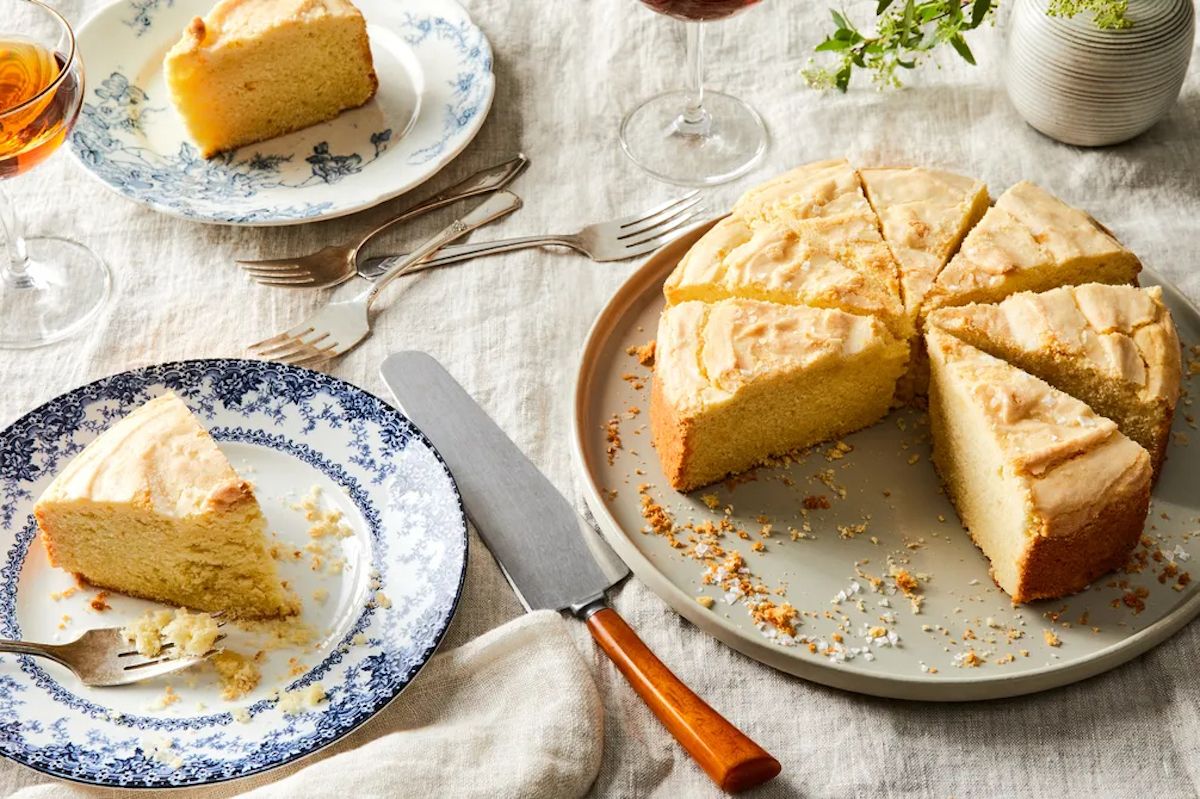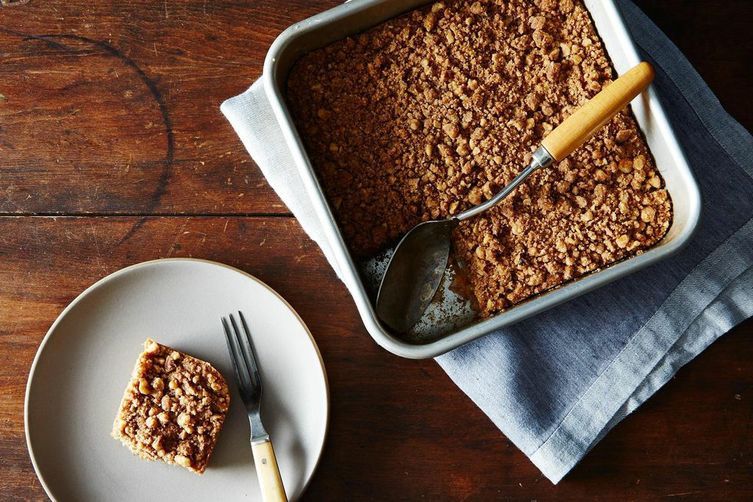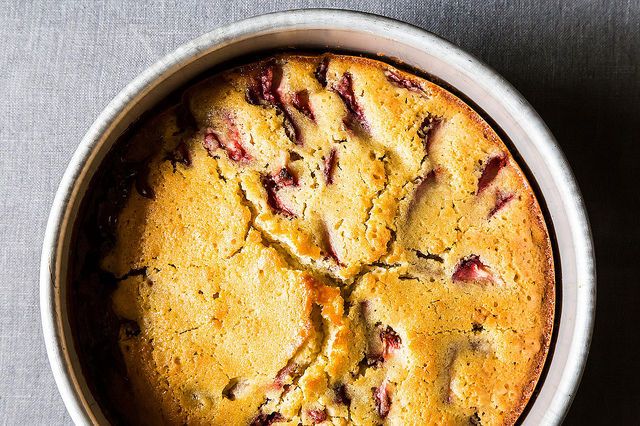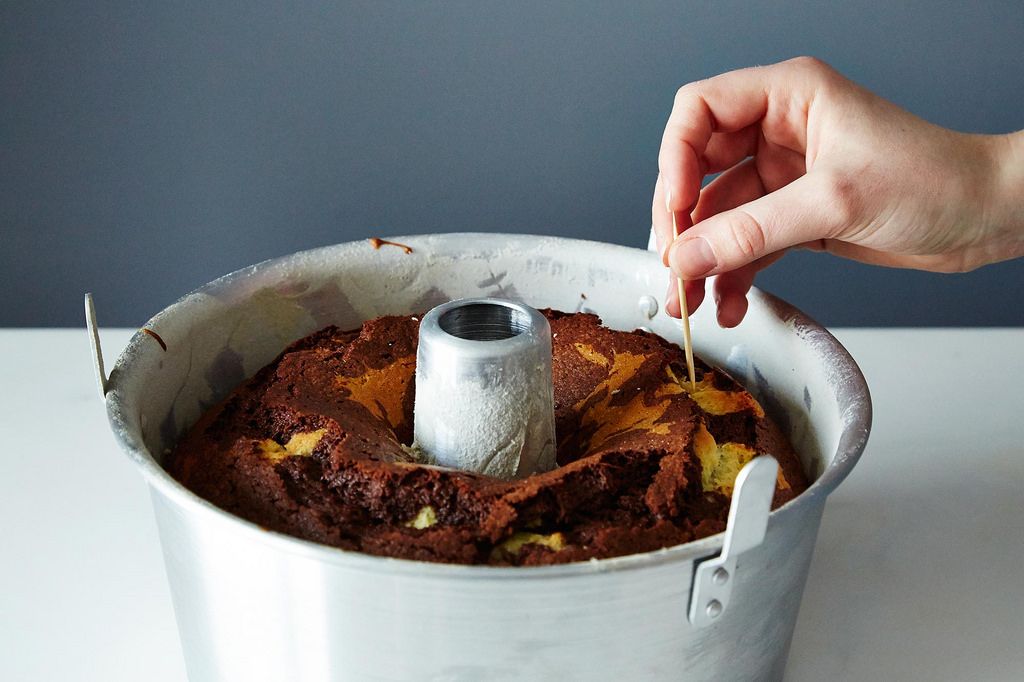Award-winning cookbook author Alice Medrich is here to help you bake smarter, not harder, with game-changing recipes and aha-moment techniques. Today, we're breaking down a question we've asked ourselves, oh, a million times: How do we adapt cake pan sizes in baking recipes? (Say, something calls for a 8x8-inch, but you only have an 9x9.) Alice will show you with just a little math.
* * *
The brownie recipe you want to make calls for an 8-inch square pan, but your only square pan is a 9-inch. Should you risk it? Maybe you want to double or triple a recipe but you aren't sure which pan to use, or maybe you have a specific large pan but don't know how many times to multiply your recipe in order to fill it.
How do you adapt different cake pan sizes for different recipes?
The answers to these and similar questions (asked endlessly in cooking classes!) do not involve rocket science, but just enough elementary school math to calculate the area of a square, rectangle, or circle. I love the math (and I've included a little math review below if you want to brush up), but I'm sharing my chart in case you don't have my thing for math.
The handy list below (or some basic math, also explained below) will tell you the surface area of your pan. Once you know the area of any pan, you can compare it to the area of another pan to see how much bigger or smaller it is. You can divide the area of a large pan by the area of a small pan to figure out how many times to multiply a recipe to fill the larger pan with the same depth of batter (more on that later).
Handy list (with the numbers rounded up to the nearest inch):
Area of square/rectangle pans:
- 6 x 6 = 36 square inches
- 7 x 7 = 49 square inches
- 8 x 8 = 64 square inches
- 9 x 9 = 81 square inches
- 9 x 13 = 117 square inches
- 12 x 16 (half-sheet pan) = 192 square inches
Area of round pans:
- 5 inch = 20 square inches
- 6 inch = 29 square inches
- 7 inch = 39 square inches
- 8 inch = 50 square inches
- 9 inch = 64 square inches
- 10 inch = 79 square inches
- 12 inch = 113 square inches
Geometry review:
I don't always have the chart at hand; I often just do the math!
For squares and rectangles: The area of a square or rectangular pan is calculated by multiplying one side times the other side. The area of an 8-inch square is 64 square inches because 8 x 8 = 64; the area of a 9 x 13-inch pan is 117 square inches because 9 x 13 = 117. Easy.
For rounds: The area of a circle equals π times the radius squared. In case you don't remember, π = 3.14; the radius of a circle is half of its diameter; and squaring means multiplying a number by itself. Ready? To calculate the area of an 8-inch round pan, multiply 3.14 (π) by 4 (because it's half of 8) times 4. Thus, the area of an 8-inch circle is 3.14 x 4 x 4, approximately 50 square inches. Not so hard!
Just by glancing at the two pans, you might think that a 9-inch pan is very close in size to an 8-inch pan of the same shape, thus making it a reasonable substitute. But if you check the chart, you'll find that a 9-inch square pan is more than 25% larger than an 8-inch square pan. (The relationship between a 9-inch and 8-inch round pan is similar.) Such a considerable difference will result in a 9-inch batch of very thin brownies that may be over-baked by the time you check them for doneness (because thin brownies bake faster than thick ones). Knowing this beforehand, you can increase the recipe by 25% for results as thick than the original recipe intended. If you want brownies that are even a tad thicker than the original recipe, you can even increase the recipe by 33%.
Let's try an example: How many times should you multiply an 8-inch brownie recipe to fill a 9- x 13-inch pan or a 12- x 16-inch half sheet? To figure this out, divide the area of the larger pan by the area of the 8-inch pan.
- For the 9- x 13-inch pan: 117 divided by 64 = 1.82, which is close enough to 2 that you can confidently double the recipe for the larger pan.
- For the half sheet: 192 divided by 64 is exactly 3, so you can multiply the recipe times 3.
Using similar math, you can calculate how many times to multiply the recipe for a round cake to make a large rectangular sheet cake. And don't forget that you don't always have to multiply recipes by whole numbers—it's perfectly fine to multiply a recipe by 1 1/2 or 2 2/3.
About now, you might be wondering about eggs. It's nice if you can increase recipes so that you don't have to deal with fractions of eggs — by increasing a 2-egg batter by 1 1/2 or a 3-egg batter by 1/3 or 2/3, for example — but it is not essential.
Here's what to do if you multiply a recipe and end up needing part of an egg: Set aside any whole eggs you need. Next, whisk the other egg to blend the white and yolk; weigh it (preferably in grams); then weigh out the fraction of the egg that you need for the recipe and add that to the whole eggs. If you need 40% of a 50-gram egg, that's 20 grams of the whisked egg. When egg whites and yolks are used separately, weigh and measure them in the same way, but separately. Add leftover egg parts to your morning scramble. See, no waste and still no rocket science!
The chart (or your ability to do the math) is extremely valuable: Use it but don't be a slave to it. When I make brownies in a large quantity, I like them to be about the same thickness as they are in a small batch, so I stay close to the chart. But, when I increase the dimensions of a birthday cake, I often make it a bit taller than the original (in other words, I round up when multiplying) because the proportions are visually more pleasing. For example, if I am making a 12-inch round cake using a recipe meant for an 8-inch pan, I divide the area of the 12-inch round pan (113) by the area of the 8-inch round (50 inches) and get 2.26. But instead of multiplying the recipe by just 2.26, I might multiply it by 3 so that the cake will turn out tall and lofty. See: Love the chart, but don't let it bully you!
When you round things up like that, don't go overboard: Pans should not be filled more than about 2/3 full or batter may overflow. If you do end up with too much batter, scrape the excess into cupcake molds or a mini cake pan — bonus cakes never go uneaten!
When you increase recipes and bake in larger pans, you should anticipate longer baking — anywhere from a little longer if the pans are filled to the same level as the original recipe to considerably longer if you are making the cake taller by filling the pan a bit more. If you are making a smaller amount of the recipe, check earlier than you think you need. And always use a cake tester to check to see if the cake is finished.
Here are 10 baking recipes to put your newfound knowledge to good use:
1. Triple-Chocolate Olive Oil Brownies
Bittersweet chocolate, chocolate syrup, and Dutch-process cocoa powder make these brownies as chocolatey as can be. We love the olive oil's grassy flavor, but feel free to swap in canola if you're not a fan.
2. Cook's Illustrated's Blondies
Meet the blondie recipe that will ruin you for all others. Don't say we didn't warn you! Made with melted butter, they're just as gooey and fudgy as a blondie should be.
"Bake this peanut butter sheet cake for birthday parties, celebrations, or just because," writes recipe developer EmilyC. "It's so easy to assemble, feeds a crowd, and will put a smile on everyone's face."
When we say magic, we mean it. These classic cookie bars include graham cracker crumbs, sweetened condensed milk, semisweet chocolate chips, toasted nuts, shredded coconut, and coconut flakes. Oh, and butter, because of course.
5. Lemon Bars With A Salty Olive Oil Crust
While most lemon bar crusts are butter-based, like a classic shortbread, this one opts for a modern upgrade: olive oil instead. A generous pinch of salt brings out the olive oil's savoriness in a way the lemons really love. Serve extra-cold with confectioners' sugar dusted on top.
Additional ideas from the editors:
6. Minnie Utsey's No-Fail Cornbread
This recipe is exactly as its name promises: no-fail. For that reason, I come back to it time and time again anytime a cornbread craving hits. Scale it up or down as needed, but I guarantee there will be none left over.
/8cd01a88-9fc2-4a4d-ad43-7c541af841a6--2018-0213_minnie-utsey-never-fail-cornbread_3x2_julia-gartland_5998.jpg)
"What happens to classic banana bread when you swap in sweet rice flour?" asks recipe developer Joy Cho. "The result is neither wholly mochi nor traditional banana bread — it's a lovely in-between, decidedly familiar with a fun textural twist." Glutinous rice flour brings mochi's signature chewy texture to the world of banana bread. Even better: it requires only about half the time in the oven as a typical banana bread would.
/34e303b0-7cc9-48e6-a431-13aa3628379f--2021-0310_mochi-banana-bread_3x2_mark-weinberg-0730.jpg)
This brilliant dessert mashup comes from Snacking Cakes (the book, but also the concept) queen, Yossy Arefi. It's light and fluffy with all the powdered sugar goodness of your favorite childhood donut holes. The best part? Arefi encourages experimentation and even provides suggested measurements for various pan sizes.
/414f51db-eedc-4a43-b64c-ead3b34bcd7d--powdered_donuts.jpg)
This simple European cake is so much more delicious than the sum of its parts. Light sponge flavored with just a hint of citrus, this cake is the perfect accompaniment to a cup of coffee or tea, or even fortified wine (just like its name implies!)
/872678b6-b2c4-4774-902f-132b471d0373--2021-0209_madeira-cake_3x2_rocky-luten_032.jpg)
10. Chocolate Cake with Peanut Butter Frosting and Salty Peanuts
For the chocolate-peanut butter lovers in your life. This may just be their dream birthday cake, and now you can easily scale it to accommodate any number of guests.
/82d7a855-aa38-42fe-a796-5d18334fc921--2021-0112_chocolate-peanut-butter-cake_3x2_ty-mecham.jpg)













Shares